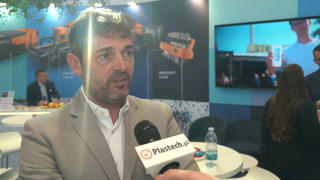
Tray-to-tray recycling is emerging as a promising pathway for increasing circularity in plastic packaging, particularly for food-grade applications. Unlike the well-established bottle-to-bottle recycling stream, PET trays have historically faced significant underutilization. Until recently, trays were rarely collected or recycled, and when recycled content was used in tray production, it typically originated from bottles. This practice raised concerns about diverting valuable feedstock from closed-loop bottle recycling systems. As a result, a substantial portion of PET trays introduced to the European Union market—about 1 million tons annually—remains unrecycled, with only around 300,000 tons currently collected. This situation underscores the urgent need for improved collection and recycling infrastructure to harness the full potential of PET tray circularity.
Recent regulatory changes in the European Union, such as the Single-Use Plastics Directive and the Packaging and Packaging Waste Regulation, are accelerating the shift toward tray-to-tray recycling. These policies not only set higher recycled content thresholds for beverage bottles but also extend targets to packaging beyond bottles. Consequently, tray manufacturers are seeking new, dedicated sources of recycled PET to comply with these evolving requirements.
Challenges in tray-to-tray recycling
Despite its potential, tray-to-tray recycling faces several technical and logistical challenges. PET trays often have complex designs, including multilayer structures, inks, adhesives, and labels, which complicate both sorting and decontamination processes. Unlike bottles, trays are less standardized in terms of shape and composition, making automated identification and separation more difficult. Contamination from food residues or embedded foreign materials further hinders sorting precision, especially after trays are compressed into bales for transport.

PET trays often feature complex designs and composition which complicate sorting and decontamination.
Collection infrastructure represents another significant barrier. While PET bottles benefit from established deposit return systems and high collection rates, trays are often collected with mixed packaging or not at all. The technology for sorting PET trays into a dedicated fraction is not yet standard practice, resulting in many trays being lost within mixed PET or general residue streams. This inconsistency in feedstock quality and limited availability increases the cost and complexity of producing food-grade recycled PET from trays.
Technological advancements in sorting and recycling
To address these challenges, the industry is adopting advanced sensor-based sorting systems. Modern near-infrared (NIR) technologies, such as Tomra’s Autosort, can distinguish between mono-layer and multi-layer PET trays—a crucial capability, as only mono-layer trays are suitable for high-quality, closed-loop recycling. At the flake level, sorting technologies equipped with multi-sensor configurations can detect flakes by polymer type, color, transparency, and material aging. This precision is essential for removing contaminants like PVC, metals, and opaque particles.

In tray-to-tray recycling, flake-level sorting targets a wide range of contaminants.
Once trays are shredded into flakes, systems like Tomra’s Innosort Flake and Autosort Flake provide high-speed, intelligent sorting based on polymer type, color, and transparency. These technologies efficiently remove common contaminants, laying the groundwork for ultra-clean output suitable for food-contact packaging. Some facilities operate dual sorting lines for clear and colored PET fractions, achieving purity levels of 99% and above, which is essential for meeting the stringent requirements of food-grade applications.
Integrating post-consumer and post-industrial streams
Tray-to-tray recycling sources material from both post-consumer and post-industrial streams. Post-industrial waste, such as offcuts from thermoforming lines, is typically clean and homogeneous, making it ideal for direct reprocessing. In contrast, post-consumer trays collected via municipal systems are more variable in composition and often contain multi-layer designs, labels, and residual contamination. Despite these complexities, post-consumer recycling is vital for scaling circularity at the consumer level. Tomra’s sorting technologies are designed to handle both streams, enhancing quality and consistency through smart sensor configurations that adapt to feedstock variability.
Future outlook for tray-to-tray recycling
Tray-to-tray recycling is poised to become a mainstream solution for managing post-consumer PET packaging. Although still in its early stages compared to bottle recycling, ongoing innovation and infrastructure expansion are expected to close this gap. Investments in automated sorting, material standardization, and dedicated collection schemes will improve feedstock consistency and recyclate quality. Collaboration among packaging producers, recyclers, and equipment manufacturers will be essential to scaling operations and overcoming design-for-recycling challenges. Regulatory approval for the use of recycled content in food trays will also be critical for industry growth. As these developments progress, tray-to-tray recycling is set to evolve into a core component of circular packaging systems, reducing reliance on virgin plastic and supporting ambitious recycled content targets.


